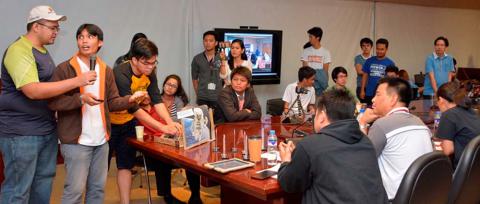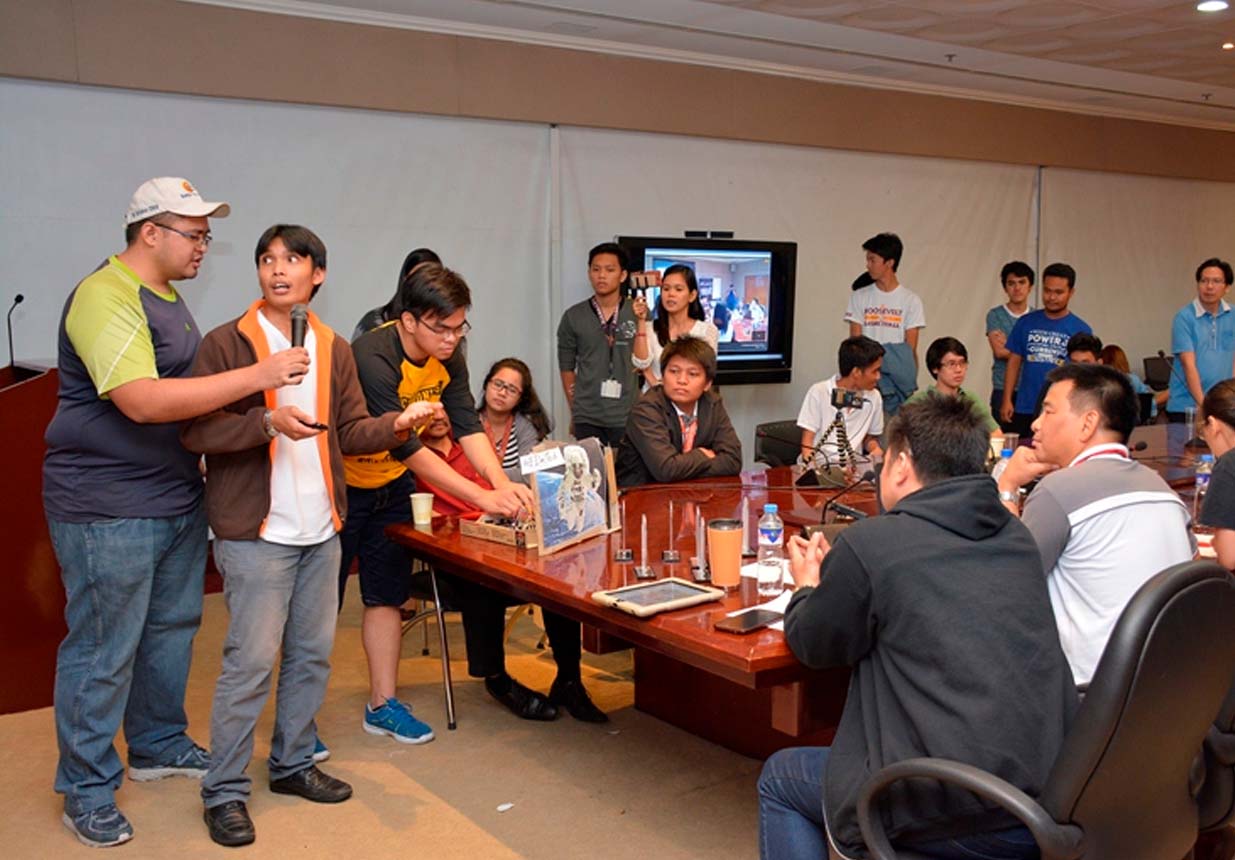
PLDT Innolab hosts 2016 NASA Space Apps Challenge PH.

Leading telecoms and digital services provider PLDT recently hosted one of the nationwide run of the 2016 NASA Space Apps Challenge at PLDT Innolab in Mandaluyong to support the country’s vision of a space program and developing creative solutions for outer space explorations by local app developers and programmers. Organized last month, some 40 university students, app developers, and programmers participated in the 3-day challenge to create digital solutions from categories including Technology, Aeronautics, Space Station, Solar System, Earth, and Journey to Mars.
The NASA Space Apps Challenge is an international event, simultaneously held at 121 cities in 55 countries. 99 of which are located outside of the United States. The local winner of every leg of the space apps challenge will have a chance to be included among the roster of global winners to be chosen by NASA.
With amateurs and experts collaborating in order to come up with the best app ideas, finding digital solutions proved to be an enjoyable challenge – one that enables an individual to think outside the box, embodying a unique quality.

Mithi Sevilla, a Robotics Enthusiast from Nanica.io, discussed the possibilities of their solutions as she gave examples of ongoing projects that may inspire participants in creating their own apps. One such project includes ArduSat, which is a miniature cube micro satellite launched in 2012 composed of the open-source hardware Arduino that uses the same program as Diwata-1, which was launched last March of this year.
“Arduino is a rapid electronic prototyping platform. It’s so popular because it can be easily used by beginners. But at the same time, it is technical enough for advanced shooters,” Sevilla said. “And because it has open-source software and hardware, it encourages exploration and can be modified.”
Taking the path towards a digital transformation, PLDT supports the continuous exploration of new technologies, seeing potential in the growth of digital innovations that people coming from different parts of the country has the ingenuity to create.
Ten teams competed to design solutions viable for NASA with the solution developed by a team of app developers and programmers, consisting of Emerson Benoza, Robin Salazar, and Adrian Vergel Viar, were hailed as the winning project. Their project Trypo Sense Puncture sensor allows astronauts to detect and pinpoint pressure changes and punctures on space suits and equipment for them to immediately repair the problem. Their project creates a sensor network that detects punctures on inanimate objects such as spacesuits or for the International Space Stations (ISS).
Emerson Benoza, an Electronics & Communications Engineer, shared his thoughts for their team’s plan, discussing certain limitations that are foreseeable in the process. “Even if we have the particular technology we need, there’s still a problem with reliability and repeatability,” Benoza said. “That’s what we needed in order to reach the particular aims we have for our ideas – we needed to think of the problem to the solution we are trying to create.”
PLDT Technology Specialist Pet Arnaldo talks about the role of PLDT Innolab as it becomes an avenue in finding the next big idea, which may eventually inspire the creation of future products and services. “PLDT has always given its utmost support in the continuous propagation of information technology through practical display of innovative ideas,” Arnaldo said. “In partnering with the Mobile IT 4 Youth, PLDT enables these certain communities to succeed. Their achievement in creating these various innovations also speaks of a wider success, especially for PLDT, which ultimately becomes a home of these truly inspired new technologies.”
PLDT ICT Research and Development VP Joselito Limjap emphasizes the importance of recognizing the potential of every new innovation. “PLDT Innolab has always recognized the growth of technology,” Limjap said. “By partnering with these organizations that bring in innovative ideas, we are continuously fueling the sparks of creativity in light of taking progressive steps towards a digital pivot.”
Despite being the only Southeast Asian country without a space program, Filipinos have always found ways to be non-conformists by creating a mindset that is always forward-looking. Aiming to finally create contributions when it comes to digital space innovations, co-founder of Mobile IT 4 Youth Wilson Censon took an opportunity to spearhead the NASA Space Apps Challenge in the Philippines. Heading the organization which is based in Nueva Ecija, Censon understood the consequences of having taken such a leap in order for the project to finally be realized. Censon speaks of timing as a factor in weighing his decision to move the project forward. “It’s about time that we gain interest and become curious about how things happen in space – how they work and ultimately, how we could make it better,” Censon said.
“PLDT is very supportive and hopefully we will be known for the potentials of the space programs that the IT industry aims to give,” Censon added.


